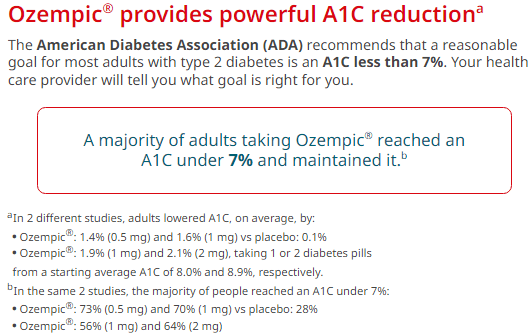Table of Contents
Ozempic side effects: Ozempic (semaglutide) has gained recognition for its effectiveness in managing type 2 diabetes and promoting weight loss. However, its use in prediabetes, a condition where blood sugar levels are higher than normal but not yet diabetic, comes with potential Ozempic side effects . This comprehensive guide aims to shed light on the Ozempic safety profile specifically for individuals with prediabetes.

Common Side Effects
While generally well-tolerated, some of the most common Ozempic side effects in prediabetes include:
- Gastrointestinal Issues: Nausea, vomiting, diarrhea, constipation, and stomach pain are frequently reported. These symptoms usually subside over time as the body adjusts to the medication.
- Low Blood Sugar (Hypoglycemia): Ozempic can lower blood sugar levels too much, especially when combined with other diabetes medications. Recognizing the signs of hypoglycemia, such as dizziness, shakiness, sweating, and confusion, is crucial for timely intervention.
- Headache: Some individuals experience headaches while taking Ozempic, but this is generally mild and manageable.
Ozempic Side Effects: Less Common but Serious Concerns
While Ozempic is generally well-tolerated, it’s crucial to be aware of less common side effects that could arise during your prediabetes treatment journey. These side effects may be rare, but they warrant attention due to their potential severity:
Pancreatitis (Inflammation of the Pancreas):
- Although infrequent, pancreatitis is a serious risk associated with Ozempic.
- Symptoms to Watch For: Severe abdominal pain, nausea, vomiting, and back pain.
- Immediate Action: Seek immediate medical attention if you experience these symptoms.
Gallbladder Problems:
- Ozempic may increase the risk of gallstones or gallbladder inflammation (cholecystitis).
- Symptoms to Watch For: Persistent pain in the upper right abdomen, fever, nausea, and vomiting.
- Consult Your Doctor: If you experience any of these symptoms, discuss them with your healthcare provider promptly.
Kidney Problems:
- While less common, Ozempic can sometimes affect kidney function, especially in individuals with pre-existing kidney issues.
- Regular Monitoring: If you have any kidney problems, your doctor may recommend regular kidney function tests while taking Ozempic.
- Open Communication: Discuss any concerns about kidney health with your doctor before and during your Ozempic treatment.
Important Note:
This is not an exhaustive list of all possible Ozempic side effects. Always consult your doctor or pharmacist for comprehensive information and discuss any concerns you may have before starting or continuing treatment with Ozempic.

Ozempic Side Effects: Effective Management Strategies
Many of the side effects associated with Ozempic can be effectively managed with proactive measures and adjustments to your routine. Here’s how you can minimize discomfort and ensure a smoother treatment experience:
Gradual Dose Increase:
- Starting with a lower dose of Ozempic and gradually increasing it over time allows your body to adjust gradually, reducing the likelihood of gastrointestinal side effects like nausea, vomiting, or diarrhea.
- This approach can help minimize the initial impact on your digestive system and make the transition to the full therapeutic dose more comfortable.
Dietary Changes:
- Avoiding greasy or fatty foods, which can be harder to digest, can help alleviate nausea and vomiting.
- Opt for smaller, more frequent meals throughout the day instead of large, heavy meals. This can ease the burden on your digestive system and reduce discomfort.
- Choose foods that are easy to digest and low in fat, such as fruits, vegetables, lean protein, and whole grains.
Blood Sugar Monitoring:
- Regular blood sugar monitoring is essential for everyone taking Ozempic, especially during the initial weeks and when the dose is increased.
- This helps you detect and manage hypoglycemia (low blood sugar) promptly, a potential side effect of Ozempic.
- Your doctor will provide guidance on how often to check your blood sugar levels and what to do if your levels are too low.
Additional Tips:
- Hydration: Staying well-hydrated can help reduce nausea and other gastrointestinal discomforts.
- Over-the-Counter Medications: Your doctor may recommend over-the-counter medications to manage specific side effects, such as anti-nausea medication or antacids.
- Communication with Your Doctor: Open communication with your healthcare provider is crucial. Discuss any side effects you experience promptly so they can help you adjust your treatment plan if necessary.
By proactively managing potential Ozempic side effects, you can maximize the benefits of this medication in your prediabetes treatment journey. Remember, your healthcare provider is your best resource for personalized guidance and support in managing any challenges that may arise.pen_sparktunesharemore_vert
When to Seek Medical Attention
It’s crucial to seek medical attention immediately if you experience:
- Severe abdominal pain
- Persistent vomiting
- Signs of allergic reaction (rash, swelling, difficulty breathing)
- Changes in vision
Conclusion
Ozempic can be a valuable tool in managing prediabetes, but it’s essential to be aware of the potential risks and side effects. By understanding the common and rare occurrences, individuals can work with their healthcare providers to mitigate these risks and maximize the benefits of Ozempic therapy. Remember, open communication with your doctor is key to ensuring safe and effective treatment.






